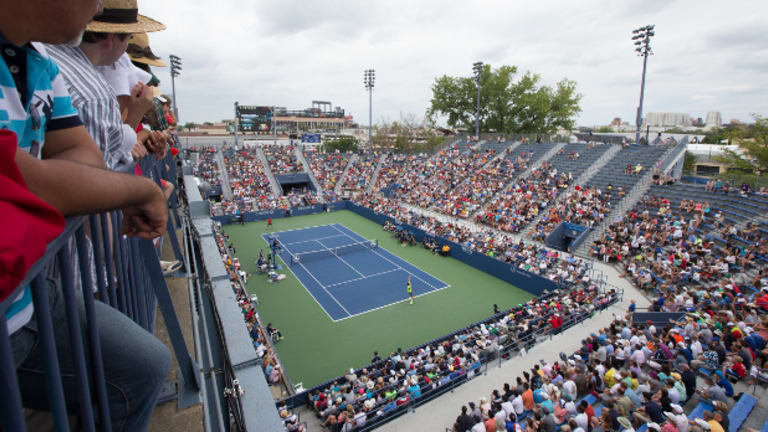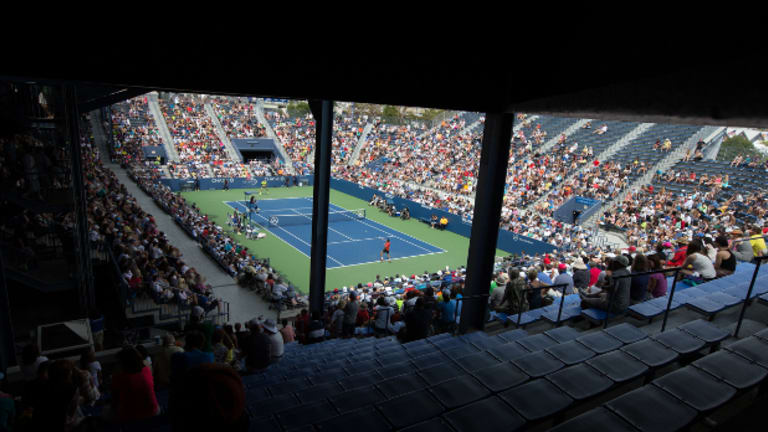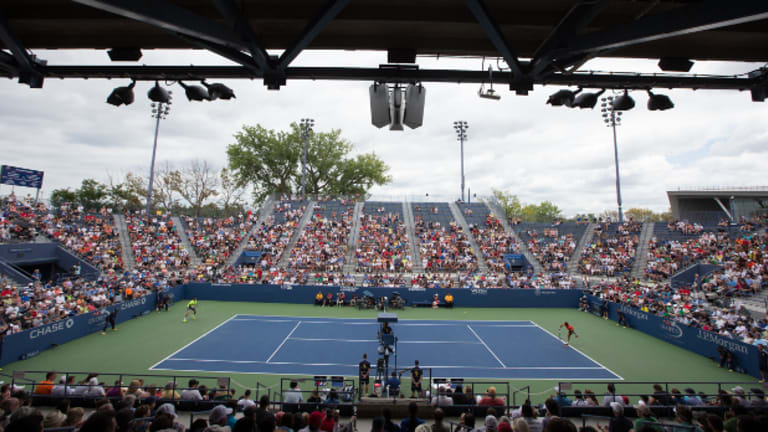t’s hard to find fault with any of the U.S. Open’s numerous renovations over the past few years. Court 17, a 2,800-seat arena which debuted in 2011, makes up for its nondescript name with cozy views and general admission seating. Side courts 4, 5 and 6, once charmless relics from the early days of the National Tennis Center, are now a unified and inviting destination of tennis amphitheaters. Adding a roof onto Arthur Ashe Stadium, rather than tearing it down and starting over, preserves enormous investment (it opened less than 20 years ago), and forever saves us from the dreaded Monday men’s final.
And yet, I would take back the old Court 17—a remote rectangle of asphalt—the previously underwhelming courts 4, 5 and 6, and subject myself to a week-long loop of Jimmy Connors vs. Aaron Krickstein highlights with rain pelting me from above if I could stop one renovation: the razing of the Grandstand. The name will remain, but the court won’t be the same when a new and larger version is built on the opposite corner of the grounds. The current Grandstand’s 38-year run as the best court at Flushing Meadows will come to an end after this year’s Open, to the lament of both fans and players.
“It’s one of those courts and one of those atmospheres where you really don’t feel anything other than excitement to be out there,” says Ryan Harrison, who’s not alone in his appraisal. I asked Serena Williams, Caroline Wozniacki and Jo-Wilfried Tsonga about the Grandstand after they played matches there at last year’s Open, and all of them included the word “atmosphere” in their positive reviews. “When my dad played, he said the graveyard court at Wimbledon was an interesting court and a fun court to play on, and he was sad that it was moved,” says Taylor Dent, son of former pro Phil Dent. “It sounds very similar to the Grandstand at the U.S. Open.”
From a fan’s point of view, the appeal of Grandstand is both obvious and nuanced. No special ticket is required to enter the 6,000-seat stadium, which, as the Open’s third-largest venue, gets popular players early in the tournament and compelling match-ups as the event moves along. But the competitors are only part of the overall experience. The close proximity of the fans to the action is such that the drama is shared by player and patron. If a moat seems to separate the crowd from the court in Louis Armstrong Stadium and Ashe, Grandstand provides a bridge. “The enclosure, the way it’s built, the sound and the energy—it feels like the people who are supporting you are pretty much on the court,” says Harrison.
The Bose-like acoustics in Grandstand make for an immersive tennis soundtrack. But what I will miss most are the court’s various vantage points; each unique perspective is savory in its own way. Sometimes the hardest thing about a late-summer day is choosing which flavor of ice cream sounds best.




